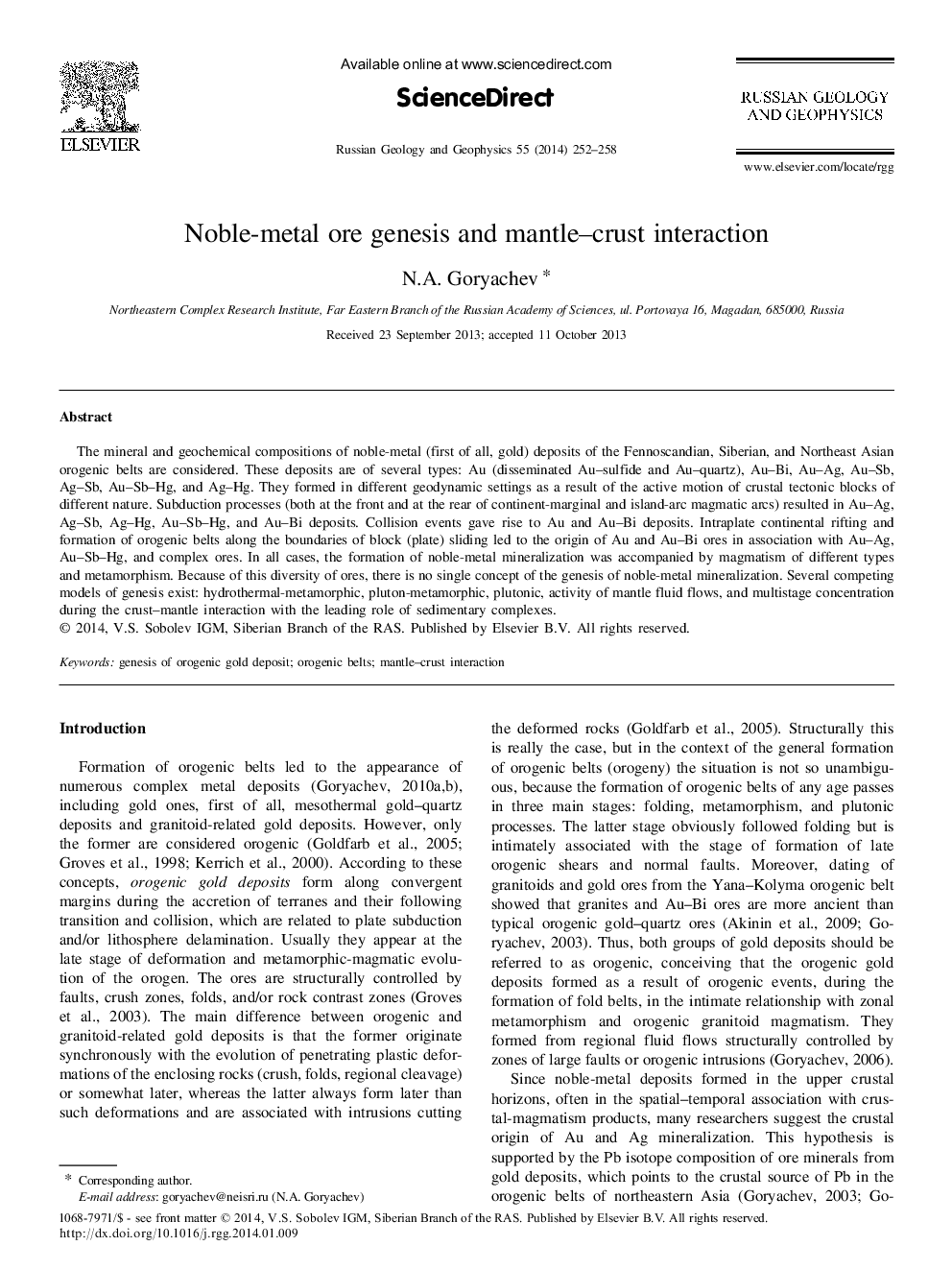| کد مقاله | کد نشریه | سال انتشار | مقاله انگلیسی | نسخه تمام متن |
|---|---|---|---|---|
| 4739106 | 1358409 | 2014 | 7 صفحه PDF | دانلود رایگان |
The mineral and geochemical compositions of noble-metal (first of all, gold) deposits of the Fennoscandian, Siberian, and Northeast Asian orogenic belts are considered. These deposits are of several types: Au (disseminated Au–sulfide and Au–quartz), Au–Bi, Au–Ag, Au–Sb, Ag–Sb, Au–Sb–Hg, and Ag–Hg. They formed in different geodynamic settings as a result of the active motion of crustal tectonic blocks of different nature. Subduction processes (both at the front and at the rear of continent-marginal and island-arc magmatic arcs) resulted in Au–Ag, Ag–Sb, Ag–Hg, Au–Sb–Hg, and Au–Bi deposits. Collision events gave rise to Au and Au–Bi deposits. Intraplate continental rifting and formation of orogenic belts along the boundaries of block (plate) sliding led to the origin of Au and Au–Bi ores in association with Au–Ag, Au–Sb–Hg, and complex ores. In all cases, the formation of noble-metal mineralization was accompanied by magmatism of different types and metamorphism. Because of this diversity of ores, there is no single concept of the genesis of noble-metal mineralization. Several competing models of genesis exist: hydrothermal-metamorphic, pluton-metamorphic, plutonic, activity of mantle fluid flows, and multistage concentration during the crust–mantle interaction with the leading role of sedimentary complexes.
Journal: Russian Geology and Geophysics - Volume 55, Issue 2, February 2014, Pages 252-258
